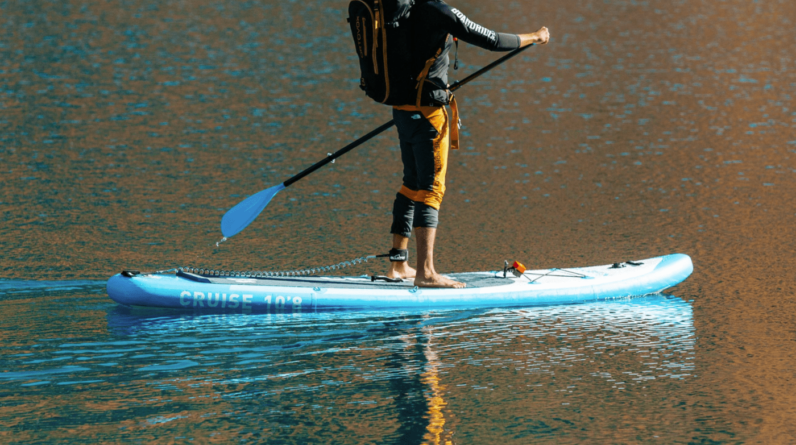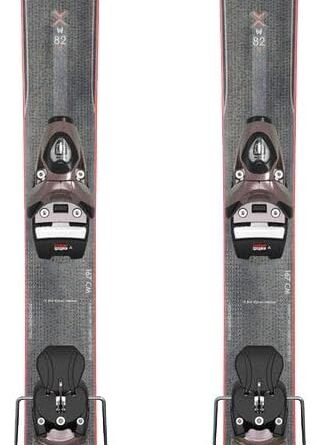
Staying safe on the water is crucial when enjoying stand-up paddleboarding, and one essential accessory for your adventure is a paddleboard leash. Not only does it keep your board close by if you fall off, but it also helps prevent your board from becoming a hazard to others. To ensure the longevity of your leash and its effectiveness, it’s important to know how to properly care for and store it. In this article, we will provide you with some essential tips on how to keep your stand-up paddleboard leash in top shape, so you can continue to enjoy your paddleboarding experience with peace of mind.

This image is property of greenwatersports.com.
Cleaning the Leash
When it comes to caring for your stand-up paddleboard leash, the first step is to ensure it is clean and free from any dirt or debris. By regularly cleaning your leash, you can maintain its durability and extend its lifespan.
To remove dirt and debris from your leash, you can start by rinsing it with water. This will help to loosen any particles stuck to the leash. Once rinsed, you can proceed to use a mild soap and water solution to clean the leash thoroughly. Gently scrub the surface of the leash with a soft brush or cloth, paying close attention to any areas that may be particularly dirty.
It is important to note that harsh chemicals should be avoided when cleaning your leash. These chemicals can cause damage to the materials and compromise the leash’s strength and integrity. Stick to mild soap and water to ensure a safe and effective cleaning process.
Drying the Leash
After cleaning your leash, it is crucial to ensure that it is properly dried before storing it. This step is essential to prevent any moisture buildup, which can lead to mold or mildew growth.
The best way to dry your leash is by air drying. Hang the leash in a well-ventilated area, allowing it to naturally dry. Avoid placing the leash in direct sunlight as this can cause the materials to degrade over time. Additionally, using a towel to remove any excess moisture from the leash can help speed up the drying process.
Inspecting for Wear and Tear
Regularly inspecting your leash for any signs of wear and tear is vital to ensure its safety and functionality. Over time, the leash may become frayed or damaged, which can compromise its strength and put you at risk while paddleboarding.
Check the entire length of the leash for any frayed or damaged sections. Pay close attention to the attachment points, as these areas are susceptible to more strain and wear. If you notice any significant damage or deterioration, it is crucial to replace the leash promptly to avoid any accidents or malfunctions.
Replacing the Leash
Knowing when to replace your paddleboard leash is an important consideration for the safety of your paddleboarding experience. While a leash may appear to be in good condition, it is essential to consider the wear and tear it has endured over time.
If your leash shows signs of significant fraying, damage, or weakened attachment points, it is time to replace it. Choosing a suitable replacement leash is crucial to ensure your safety and the effectiveness of the leash. Consider factors such as leash length and material to find a leash that suits your specific paddleboarding needs.

This image is property of stand-up-paddle-board.net.
Storing the Leash
Properly storing your paddleboard leash is essential to prevent damage and ensure its longevity. By following a few simple steps, you can keep your leash in excellent condition between uses.
Start by coiling the leash properly. Avoid creating kinks or tangles in the leash, which can make it more challenging to use in the future. You can use your hand to loosely coil the leash, ensuring it remains smooth and untangled.
To further protect your leash, consider using a leash storage bag. These bags are specifically designed to keep the leash safe and organized when not in use. They provide an additional layer of protection against dust, moisture, and potential damage.
Avoiding Extreme Temperatures
Extreme temperatures can have a significant impact on the integrity of your paddleboard leash. It is crucial to consider both excessive heat and extreme cold to maintain the leash’s quality and performance.
Exposure to excessive heat can cause the leash’s materials to degrade and weaken. Therefore, it is crucial to prevent leaving the leash in direct sunlight for extended periods. Instead, find a shaded area or bring the leash indoors when not in use.
Similarly, extreme cold can also affect the leash’s performance. Freezing temperatures can lead to brittle materials and increased likelihood of breakage. To protect your leash from extreme cold, avoid leaving it outside in these conditions. Instead, store it in a dry and temperature-controlled environment.

This image is property of i.ytimg.com.
Separating the Leash from the Board
After each paddleboarding session, it is essential to remove the leash from the board properly. Improper detachment can result in damage to both the leash and the board, compromising their performance and safety.
To remove the leash, start by locating the attachment point on the board. This is usually a small loop or ring near the tail of the board. Once located, gently detach the leash, taking care not to use excessive force.
Avoid forcefully pulling or tugging the leash, as this can cause damage to the attachment points. By properly separating the leash from the board, you can ensure its longevity and prevent any unnecessary wear and tear.
Avoiding Sharp Objects
To protect your paddleboard leash from damage, it is crucial to keep it away from sharp objects and abrasive surfaces. These can cause cuts or tears in the leash, compromising its strength and functionality.
When storing the leash or carrying it to and from your paddleboarding destination, be mindful of any sharp edges that could come into contact with the leash. Avoid placing the leash on rough or abrasive surfaces that could potentially damage it.
To further protect the leash when not in use, consider using a leash cover or storing it in a dedicated compartment or bag. These additional layers of protection can help prevent any accidental damage.

This image is property of images.surferseo.art.
Transporting the Leash
Transporting your paddleboard leash safely is essential to avoid any potential damage during transit. Whether you are carrying the leash separately or transporting your paddleboard with the leash attached, there are a few key steps to follow.
If you are carrying the leash separately, consider using a padded board bag. This will offer extra protection for the leash during transportation. Make sure to secure the leash within the bag, preventing any potential movement or tangling.
If you are transporting your paddleboard with the leash attached, ensure that it is properly secured to prevent any unnecessary stress or strain. Double-check the attachment points and tighten any fasteners if necessary. By taking these precautions, you can ensure the safe transport of your leash and paddleboard.
Proper Storage Location
Choosing the right storage location for your paddleboard leash is essential for its protection and longevity. The following considerations will help you find the ideal storage area.
Opt for a dry and clean storage area. Moisture can cause damage to the leash over time, so it is important to keep it away from damp or humid environments. Avoid storing the leash near water sources or areas prone to excessive moisture.
Additionally, it is crucial to protect the leash from weather elements. Direct exposure to sunlight, rain, or extreme temperature fluctuations can degrade the materials and compromise the leash’s integrity. Find a storage area that is sheltered from these elements to ensure optimal protection.
Lastly, it is important to keep the leash away from pets or children. A leash may appear to be a fun toy, but it is not designed for playful use. Keep the leash in a location where it is out of reach to prevent any accidental misuse or damage.
By following these essential tips for caring and storing your stand-up paddleboard leash, you can ensure its longevity and maintain effective performance throughout your paddleboarding adventures. Remember to regularly clean and inspect the leash, store it properly, and protect it from extreme temperatures and potential damage. With proper care, your leash will continue to provide a safe and reliable connection between you and your paddleboard.

This image is property of www.sharksups.com.






